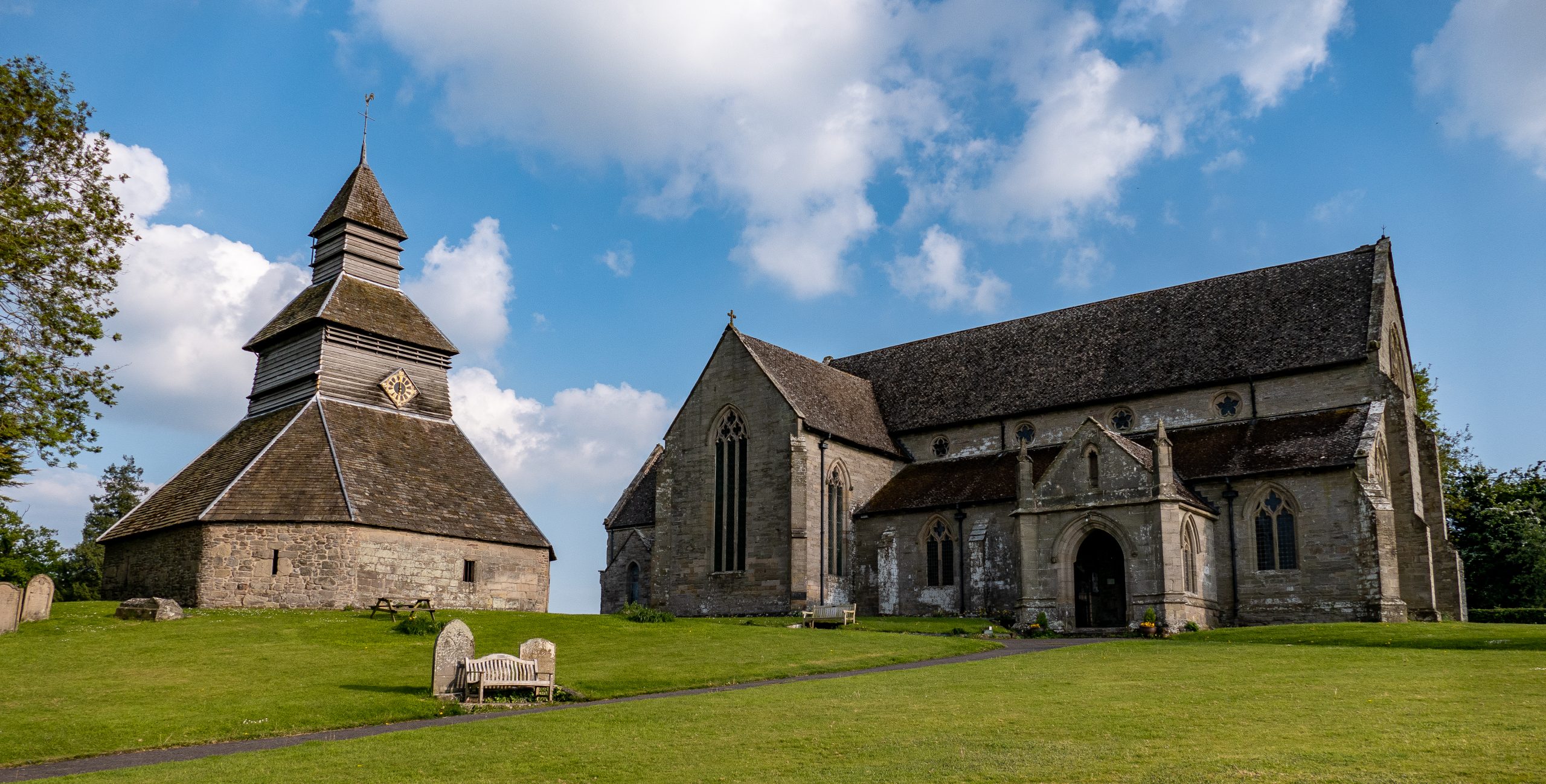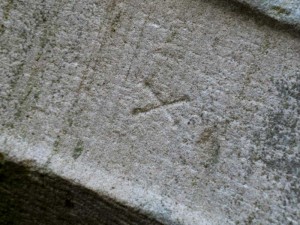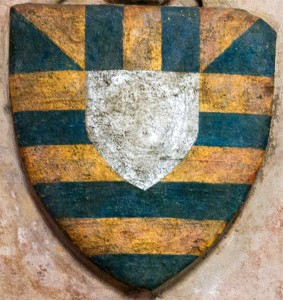
Pembridge Church is a major feature in Pembridge but the building that is there now, was not the original church.

A column from an earlier building in the wall of Pembridge Church
It is likely the church of St Mary’s, Pembridge, was founded some time after 1086, as no church was mentioned in the Domesday book. From a reference in the 13th century chronicle of Wigmore Abbey, it would appear that the present church of St Mary was established on its present site by the early 1140s and that it was already the administrative centre of a rural deanery.
The 12th Century church must have been quite large as the chancel was a similar size to the current one, as the remains of some of the 12th century stone work can be seen in the walls.
The present church was probably built in the early 14th century. Originally it was thought that it was built over a number of years, possibly delayed by the Black Death. However research into the mason’s marks by Peter Klein suggests the opposite – that the church was built over a period of four years.
So the next question is which four years?

A stone mason’s mark from Pembridge Church
The rebuilding of the church has been dated to the late 1320s by Morriss, due to the style of the architecture, with the impressive Decorated interior.
But can this be narrowed down any further?
The stained glass in the windows of the west aisle of the church, described by Silas Taylor in the mid 17th century, originally contained crests of three families; Mortimer, Geneville and Grandson. There is only one event that connects these three families, the marriage of Blanche Mortimer, daughter of Roger Mortimer and Joan de Geneville, to Sir Peter Grandison. This took place in early 1330, probably in Pembridge.
Could this have been in the newly built church?
It does suggest that the building work was completed around this date.

The Mortimer Coat of Arms, taken from the tomb of Blanche Mortimer
Roger Mortimer, 1st Earl of March was a powerful lord who owned the manor of Pembridge as well as Wigmore, Ludlow, large parts of the the rest of the country and some estates in Ireland. He was married in the Pembridge, in 1301 to Joan de Geneville. He rose in power, but in 1322, took part in the Marcher Lords rebellion against King Edward II, and was locked up in the Tower of London and his wife was also imprisoned in Hampshire. Roger escaped and fled to France, where he met up with Edward’s wife, Queen Isabella. Together they returned to England and deposed Edward II.
I don’t know when Roger and Joan met after Roger returned to England, however it is known that they were reunited November, 1326 at Pembridge. Was this when building work began on the church? It is unlikely that work took place prior to this as Roger’s estates were forfeited to the crown while he was in exile, but after his return he started a program of building work, including at nearby Ludlow castle and at Wigmore. Roger Mortimer did not survive long to see the results of this building work. In October 1330 he was taken prisoner by Edward III, tried for treason and executed. He lands were forfeited to the crown and it would be unlikely that his crest would have been placed in stained glass windows after this date.
This gives us a suggested period of 1326 – 1330 for building Pembridge church, however more research needs to be done to find documentary evidence confirm this.